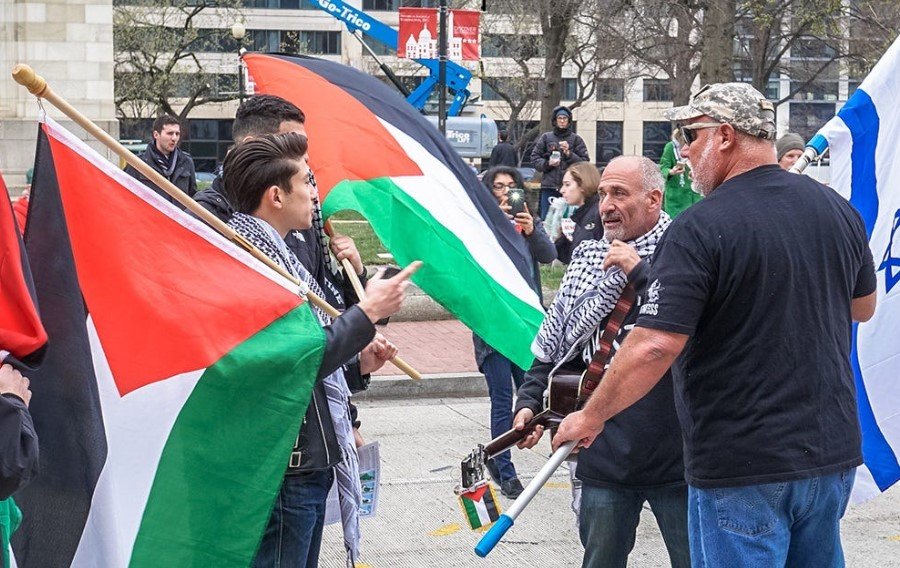In the rolling hills of southern Syria, where olive trees meet the mountain shadows of Suweida, the ancient Druze community is once again caught in the violent churn of a fractured nation. What began as the reported abduction of a local Druze merchant has erupted into one of the bloodiest episodes in the province in years, triggering days of inter-communal warfare and drawing Israel directly into the conflict.
On Sunday, July 13, fierce fighting broke out between armed Druze militias and Sunni Bedouin groups, leaving entire villages in ruin and civilians stranded amid sniper fire and mortar blasts. By Tuesday, the Israeli Air Force had launched a series of strikes across the region, claiming it was acting to defend Syria’s Druze minority and target government-aligned militias accused of aggression.
The death toll has soared to more than 350, according to the UK-based Syrian Observatory for Human Rights, and the violence shows few signs of abating. For Syria—a country long gutted by war, revolution, and regime change—the escalating sectarian crisis is a devastating blow to hopes of national reconciliation.
A Nation on Edge
Suweida, a mostly Druze province nestled in Syria’s south, had for much of the civil war remained relatively insulated from the worst of the fighting. Its isolation and a longstanding pact with the Assad regime kept major battles at bay. But those tenuous arrangements collapsed earlier this year, when Syria’s post-Assad government under Ahmed al-Sharaa took control.
Sharaa, a former jihadist commander who rose to power after Islamist-led rebels captured Damascus in December 2024, had promised to protect the country’s religious minorities—including the Druze, Alawites, and Christians. Yet his newly formed security forces have clashed with local militias across the country, including in Suweida in April and May, where dozens were killed in confrontations with Druze factions demanding greater autonomy.
Those tensions flared again this week, underscoring the explosive mix of sectarian grievance, weak governance, and foreign intervention.

Who Are the Druze?
The Druze, a secretive and centuries-old offshoot of Islam with roots in Ismailism and Gnostic traditions, number roughly 700,000 in Syria. Although considered Muslims by some, their unique theology and cultural practices have long set them apart, and they’ve historically preferred to remain aloof from political power.
But when violence knocks at the door, neutrality becomes untenable.
In the Syrian civil war, many Druze aligned with local defense forces or cut deals with both the Assad regime and opposition groups. Others, especially youth, fled the country altogether. Their strongholds in the Suweida mountains have become flashpoints in the country’s long-running power struggles, particularly as outside powers like Israel increasingly view the protection of Druze communities as both a humanitarian and strategic priority.
Why Did Israel Intervene?
Israel’s intervention—carried out through precision airstrikes on Syrian military positions and pro-government militias near Suweida—was swift and controversial. A statement from the Israeli Defense Forces (IDF) late Tuesday said the strikes were a “limited and targeted operation to defend vulnerable Druze communities threatened by extremist elements and government-backed militias.”
The operation comes amid growing pressure within Israel to safeguard the Druze, many of whom serve in the Israeli military and maintain deep communal ties with Druze populations in Lebanon and Syria.
Israeli Prime Minister Benjamin Netanyahu, still embroiled in a Tel Aviv corruption trial, has been keen to demonstrate national strength despite domestic distractions. His government has also grown wary of instability along its northern border, especially after Hezbollah-allied fighters and Iranian proxies used previous conflicts in Syria as cover for smuggling weapons and launching drone attacks into the Golan Heights.
Israel’s action, though ostensibly humanitarian, also reflects long-term strategic calculus: keeping Iran and jihadist remnants away from the Israeli frontier, and signaling to Syria’s new rulers that minority crackdowns will not go unanswered.
Civil War’s Bitter Echoes
The resurgence of ethnic violence and foreign bombardment has reminded many Syrians of darker times. From the burning of Aleppo to the siege of Homs, the trauma of Syria’s civil war has never fully receded.
In March, sectarian clashes in the Alawite-dominated coastal provinces killed hundreds—an event that signaled the beginning of what some analysts now warn could become a second civil war, this time waged more along sectarian than ideological lines.
“The post-Assad transition has failed to build national unity,” said Lina Khatib, a Syria specialist at Chatham House. “What we’re witnessing is the collapse of whatever social compact remained after 12 years of war. The new government lacks legitimacy among key minorities, and no foreign power—not even Israel—can impose stability from the outside.”
A Bleak Outlook for Syria’s Minorities
For the Druze, the calculus is existential. They remain caught between jihadist movements to the north, regime loyalists with fresh grudges, and international actors pursuing their own agendas. While Ahmed al-Sharaa’s government has promised justice and inclusion, its actions on the ground have often been coercive or dismissive of local governance.
In Suweida, funeral processions now weave through cratered streets. The voices of elders, pleading for peace, are drowned out by the rattle of machine guns and the thud of incoming airstrikes. Reports from local journalists suggest that hundreds of families have fled to the hills, many without access to water, medicine, or communication networks.
As Israel weighs whether to launch more strikes, and Syria’s government struggles to contain unrest, one thing is certain: the fabric of Syria’s multi-ethnic, multi-religious society is fraying faster than it can be stitched back together.
